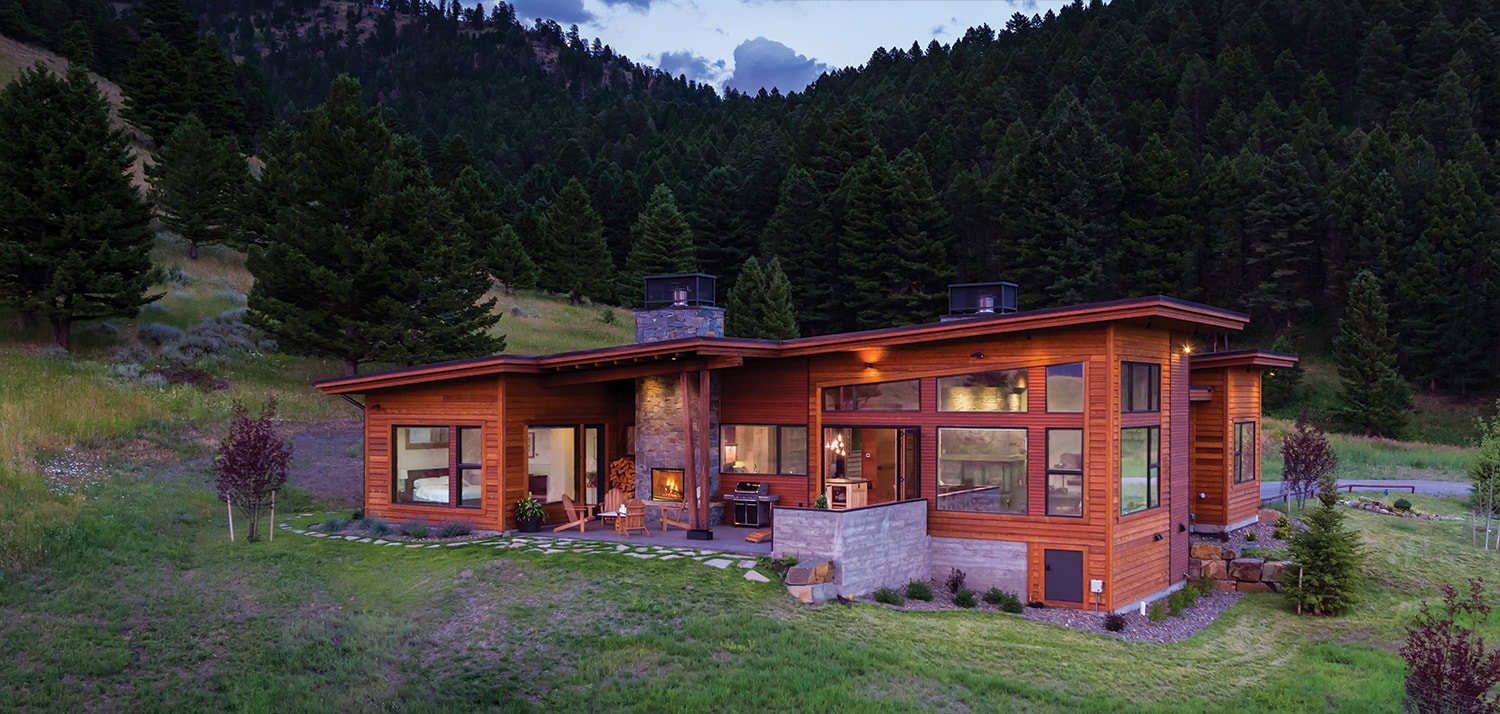
12 Apr Capturing the Light
SITTING ON 290 ACRES IN THE BRIDGER MOUNTAINS in Southwest Montana, this mountain home did not start out with the contemporary feel it now projects.
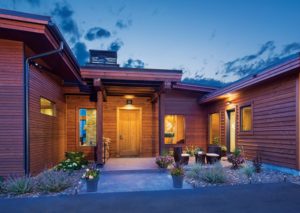
Each entrance conveys a unique perspective of the home.
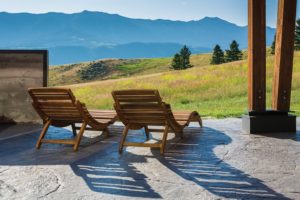 “We bought the property five years ago and we were at a point where we just decided to do something,” the property owner said. “We went around and interviewed builders first. We met with Peter Lee, of Teton Heritage Builders, who then introduced us to Andrew Brechbuhler.”
“We bought the property five years ago and we were at a point where we just decided to do something,” the property owner said. “We went around and interviewed builders first. We met with Peter Lee, of Teton Heritage Builders, who then introduced us to Andrew Brechbuhler.”
The owners had talked with several architects but really clicked with Brechbuhler, although at the time the owners thought they wanted a traditional mountain-lodge style home. “We went through the beginning process, but we were difficult — we didn’t know exactly what we wanted,” she said, “until we came up with a contemporary design we liked — which was a 180-degree turn from the traditional look we said we wanted at first.”
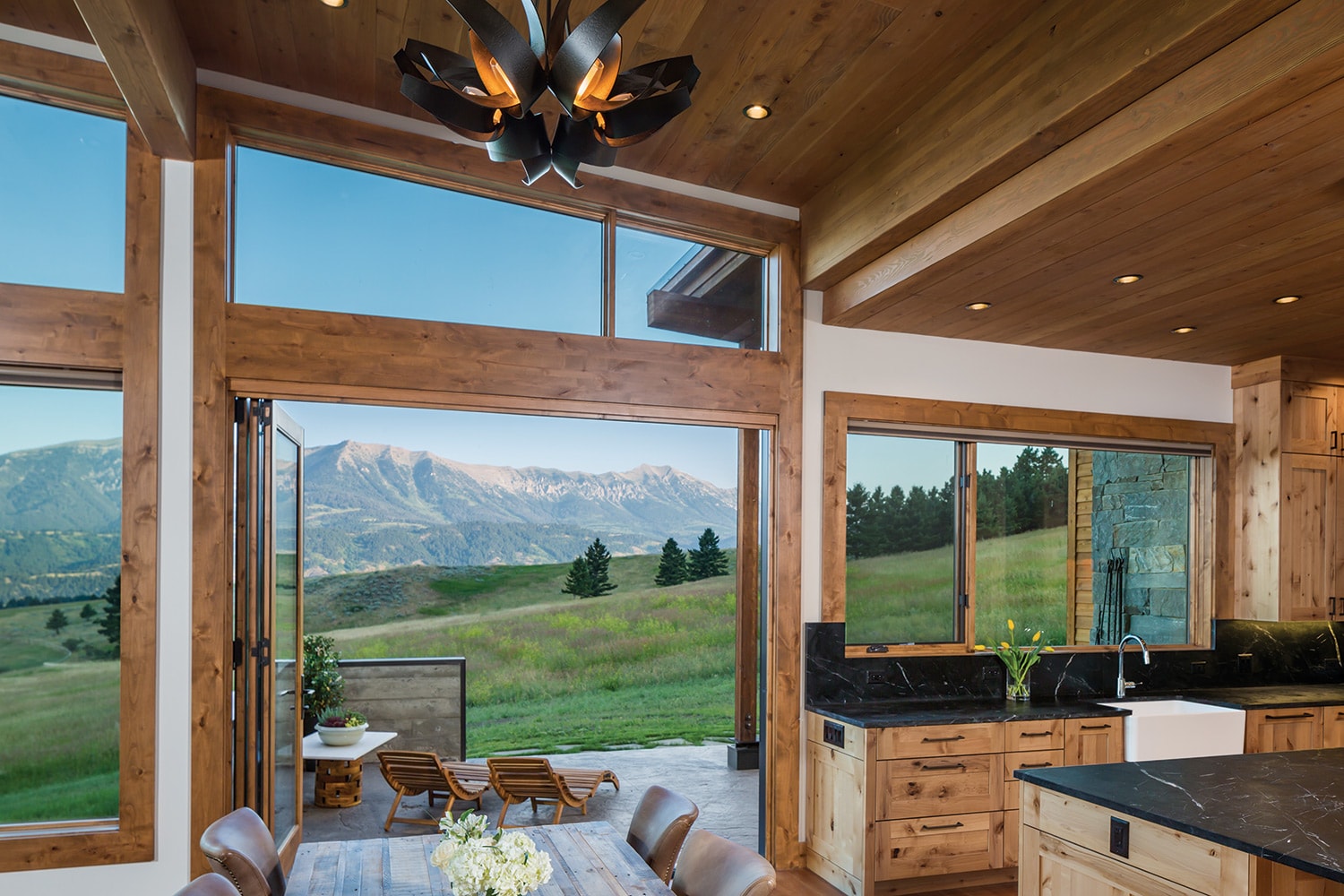
With folding glass doors, the entertainment area extends from indoors to outdoors.
Brechbuhler met with the owners, went out to the property, and realized what kind of panoramic views were available there. He knew a contemporary home would give them the large windows and open vistas they wanted, without introducing a style completely out of step with Montana.
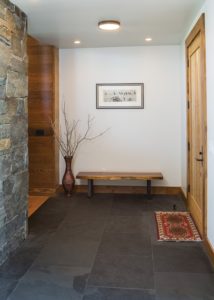
The entryway is an example of the mountain modern style reflected throughout the home, including the use of stone, wood, and neutral colors.
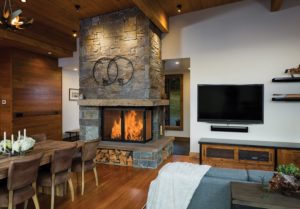
The freestanding fieldstone fireplace provides warmth and comfort all year round.
“The owners decided they wanted something clean and contemporary, something more open than where we started,” Brechbuhler said. It ended up as what he calls a contemporary mountain home, with the feeling of being tucked in and cozy as well, while having the layout of an open floor plan with a low-sloped roof and lots of windows. “It was a feel they hadn’t seen,” he said. “We have to design every house to meet the environment and the client, looking at the amenities of the property. There was a draw in a relatively flat spot with spectacular views. It was evident they didn’t need a lot of extra spaces; for them the key was to the capture the big views into the valley and back toward the Bridger Mountains.”
Brechbuhler always starts out by listening to his clients’ wants and needs, and then figures out how the house will serve those needs. He then adds another aspect to the mix: how the house will live.
“By thinking about how the house will live, along with the lifestyle of our clients, things like the library niche begin to make sense,” Brechbuhler said. “We knew she wanted an office, a central great room, the open kitchen-dining-great room, a master suite, and a guest suite off the back of the house, as well as an equipment room for their horse gear. Because it’s so open, and up on the hillside, they have wind and snow, so we created a front entry court as a protected area.”
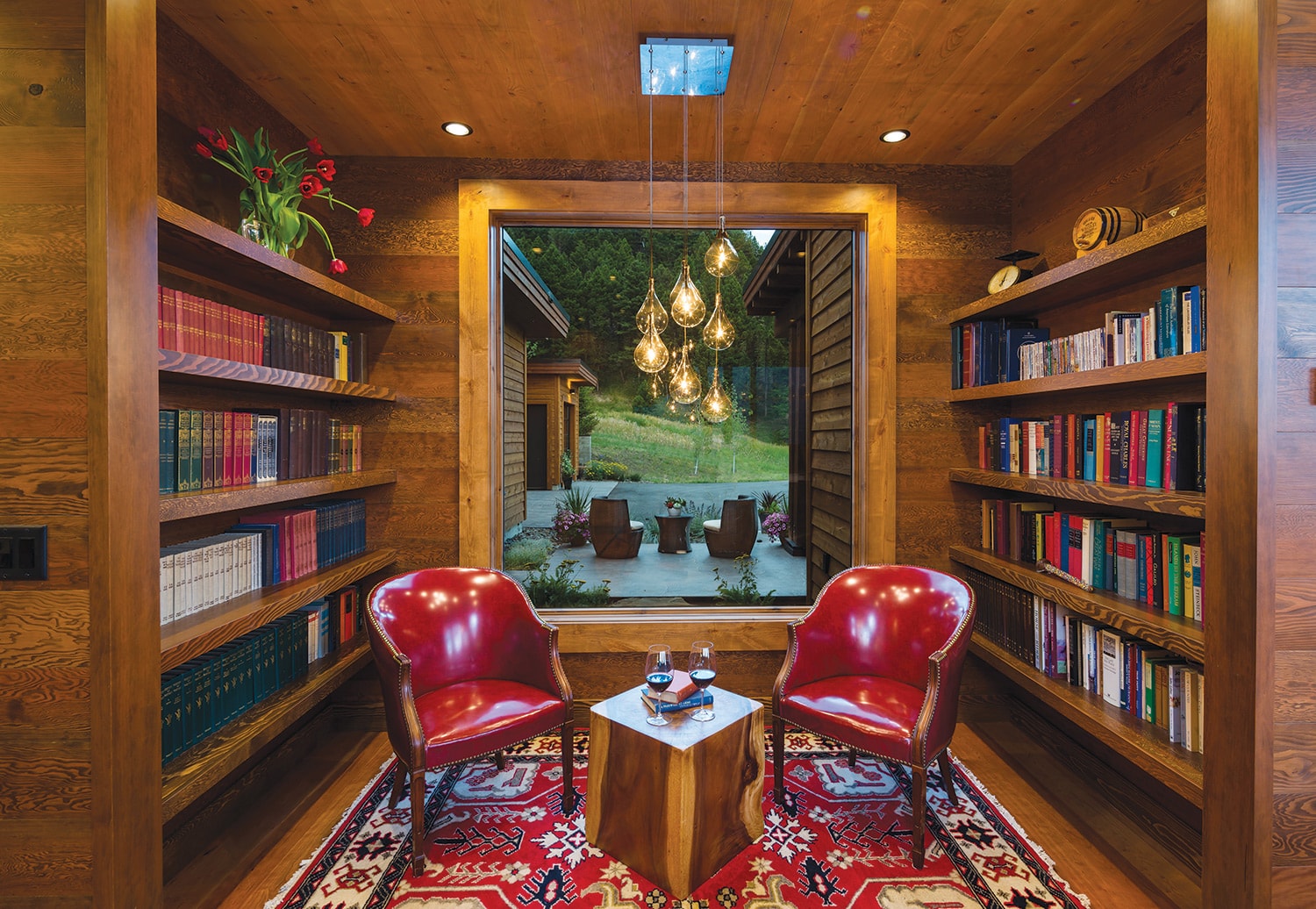
Built-in, wall-to-ceiling shelves and a picture window create the perfect respite.
The library became a “space within a space” right next to the kitchen, which looks to the quiet outside aspect of the home. The home itself measures only 2,500 square feet, creating a low impact on the property.
“They were targeting a smaller house and we wanted it to live larger than it is, but make features to create a more enjoyable lifestyle. In order to do that, we designed different sides of the house, each with its own aspect and environment,” Brechbuhler said. “The important takeaway on this house was combining their personalities into the home and making it functional as well as aesthetically pleasing to the site. It’s not a very large house, but it’s a comfortable home and appropriate for its location.”
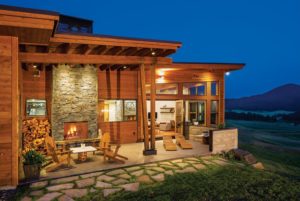
A sheltered back patio and outdoor fireplace allow for evenings to reflect.
Aside from the master suite, guest suite, and open-concept living and dining area, the house also has a large mudroom and a spacious, inviting garage.
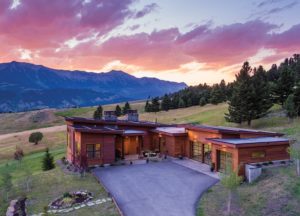
Taking the long view — privacy is assured with an extraordinarily long driveway.
“First of all, we’ve lived in a large house before,” the owner said. “We wanted something smaller and wanted each piece of space to be used. We have horses and I wanted to be able to see them from the great room and from the master bedroom, for my own peace of mind.”
There is an area with an outdoor fireplace that leads to an indoor-outdoor entertaining area, with bi-fold glass doors that open up the space.
“I love a light-filled house,” the owner said. “It makes me happy. We put in all the big windows, and we’re in a wildlife corridor so we get the nonstop viewing of elk, deer, fox, mountain lions, and it’s a big flyway for raptors. It feels like we’re living outside, but we’re inside, warm and toasty.”
For Lee, president and founder of Teton Heritage Builders, communication and planning were the keys to a smooth project. The fact that the owners contacted Lee before they decided on an architect made the process easier for everyone.
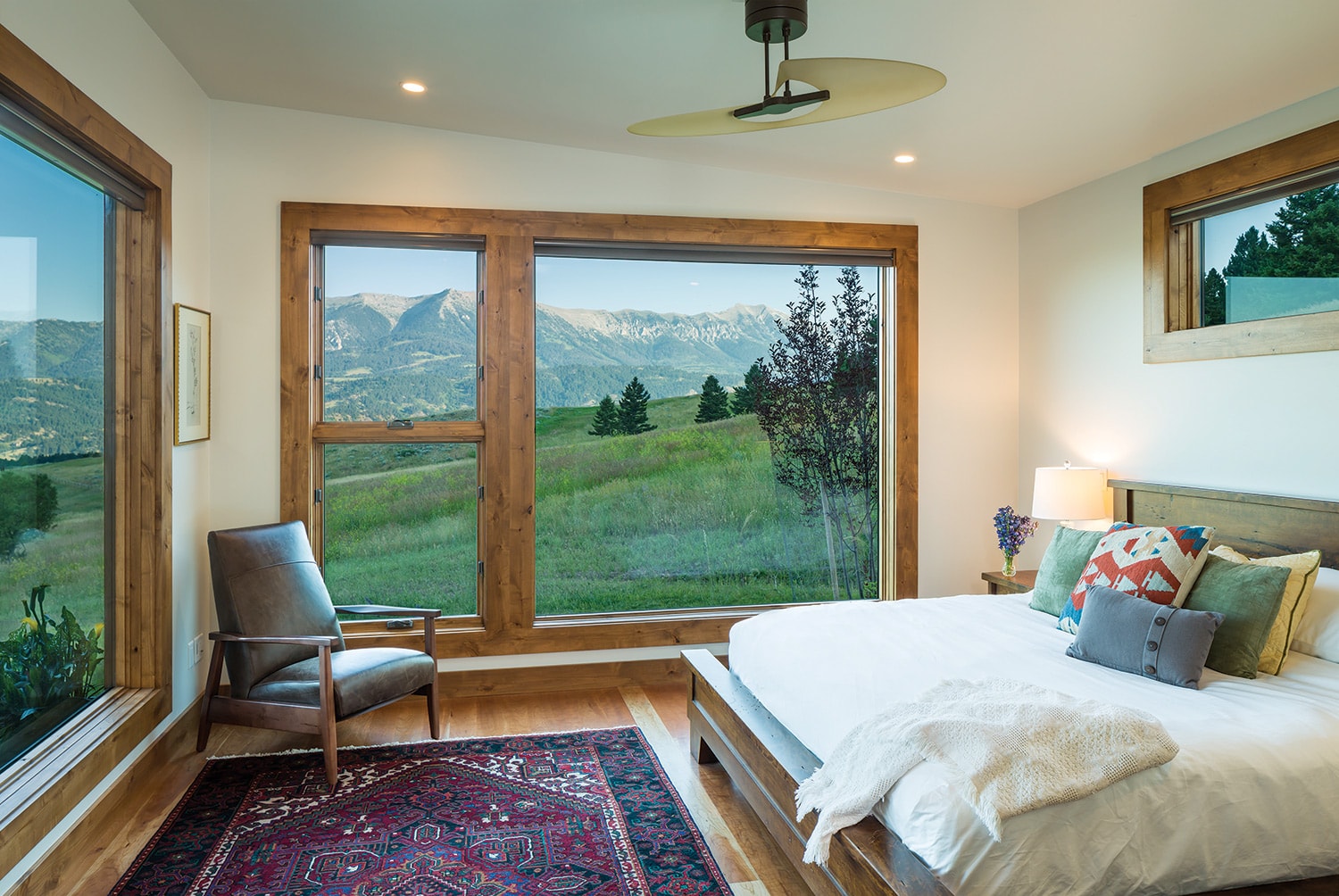
Walls of windows in most rooms ground the home to the landscape.
“People come to us first about one-third of the time,” Lee said. “If the client comes in and visits with us first, we can glean what’s important to them, get a sense of their personality, and because we’ve worked with dozens of architects over the last 22 years, we can make a good introduction.”
As he put it, “If you want a Matisse, don’t go to Picasso.” Each architect has a certain vernacular they enjoy. Lee said that the idea is to introduce the client to an architect that understands where the client wants to go.
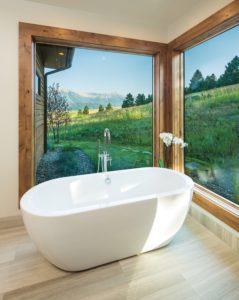
The tub in the master bath is perched for maximum mountain views.
“In this case, we thought Andrew would be a great fit,” Lee said. “Although they took it in their own direction, it was a great partnership, and that allowed us to have a great straightforward construction process.”
Straightforward except for one night…
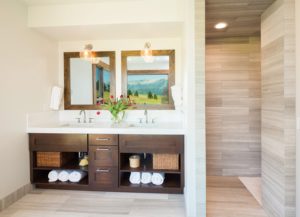
The master bath, with his and hers sinks, is designed with sleek angles and neutral tones
“We were zipping along on the project, about to put the roof on, and had these 60-foot-long, standing-seam metal panels stacked and tied down on the roof,” Lee said. “We went away for the evening and that night there was a 70-mile-per-hour windstorm. All those panels ended up twisted like pretzels in the backyard — that was a hiccup. We reordered and then it went up fine. We really tied things down after that!”
Aside from that one incident, everything went like clockwork, including the installation of in-floor radiant heating. “The idea is to take the heat under your feet and convert it to heating your home,” Lee said. “The temperature of the ground 7 feet below the surface is, on average, 45 degrees.”
The closed system sends a water-glycol mixture through a series of underground pipes, through a geothermal heat pump, and then through the in-floor heating system.
“It also reduces the heating bill to about a fifth of what it would be,” Lee said. “That was the fun part of the project, and the clients were very excited about it; it’s always fun to be environmentally friendly.”




No Comments